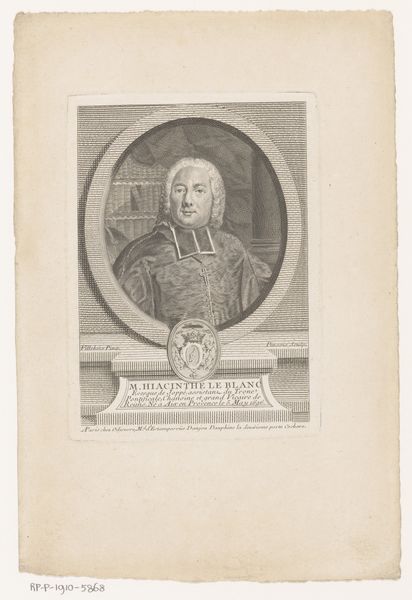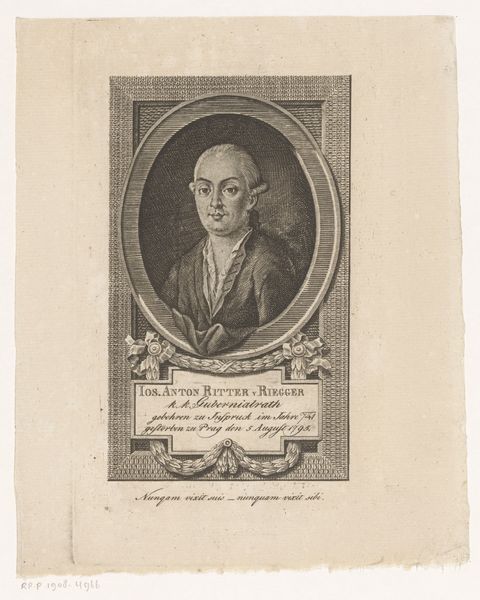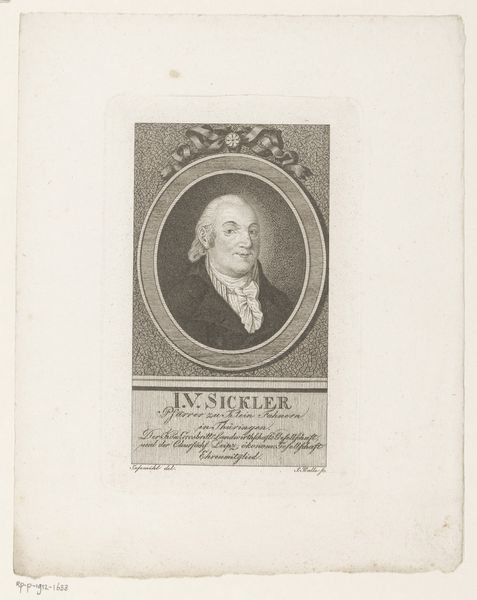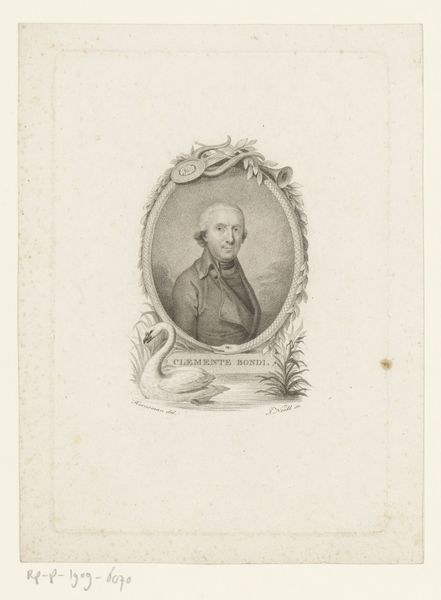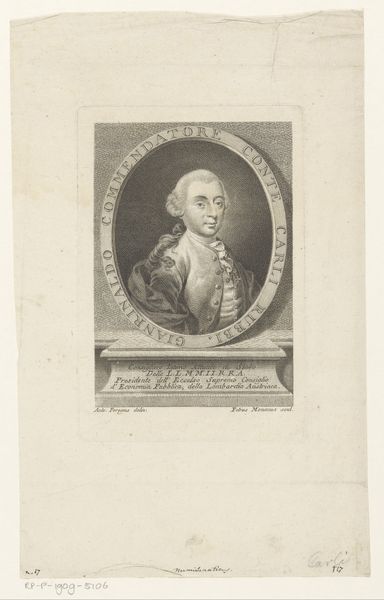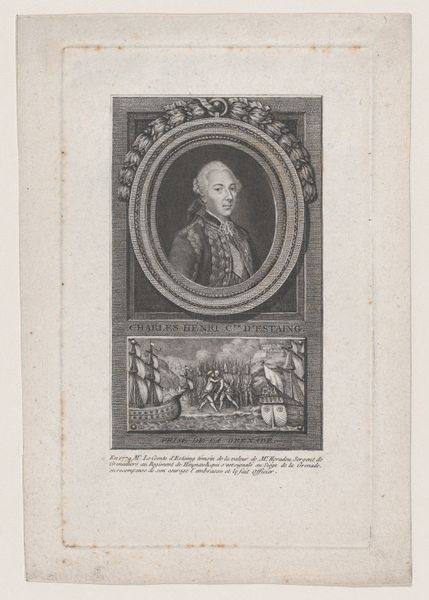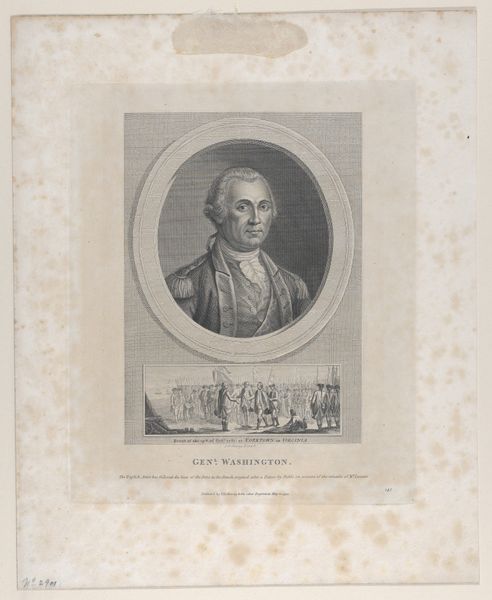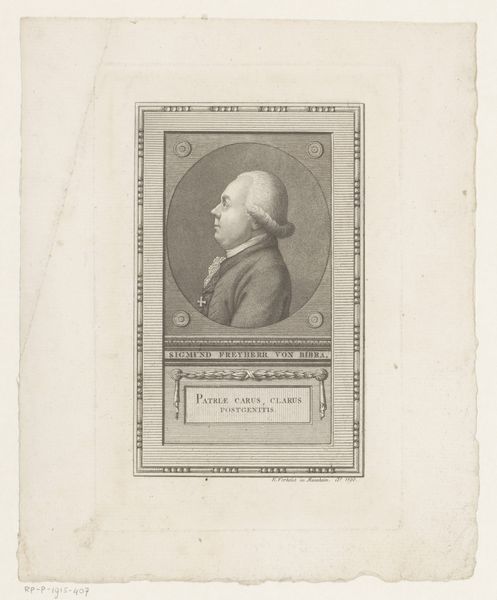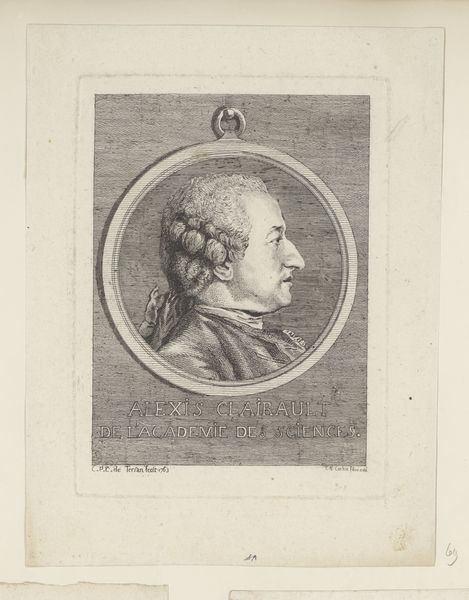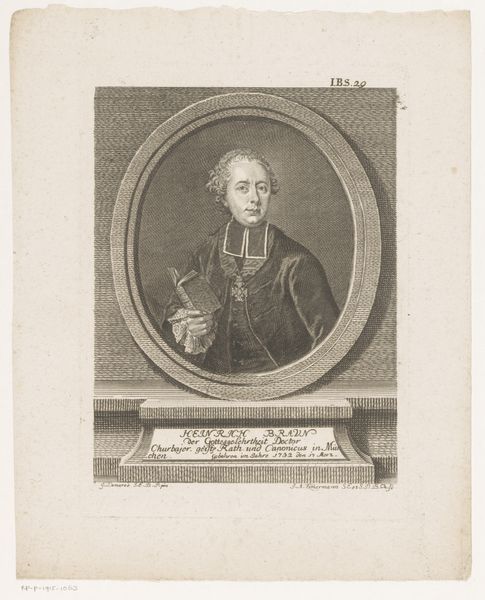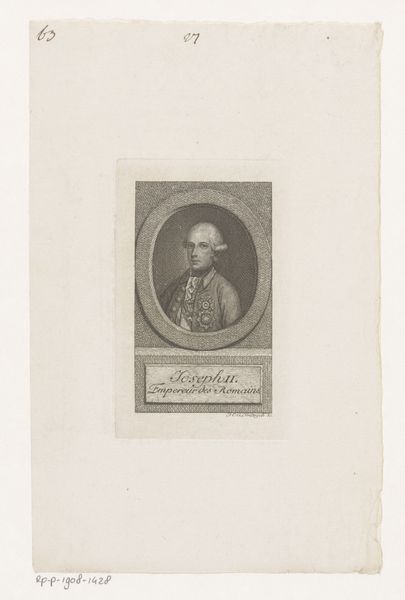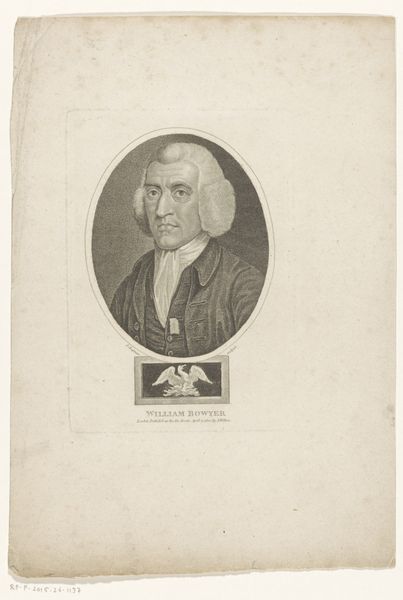
drawing, print, engraving
#
portrait
#
drawing
#
neoclassicism
# print
#
pencil sketch
#
figuration
#
line
#
history-painting
#
engraving
#
realism
Dimensions: Plate: 8 1/4 × 5 3/4 in. (21 × 14.6 cm) Sheet: 11 15/16 × 9 1/16 in. (30.3 × 23 cm)
Copyright: Public Domain
Curator: This print, created around 1820, presents a likeness of "General Washington" by Charles Willson Peale. It's currently held at the Metropolitan Museum of Art. The image strikes me as neoclassical in style, typical for depictions of leaders during this era, focusing on realism and clear lines to project authority and trustworthiness. Editor: The very spareness of it, just the stark lines against the pale paper, gives it such an austere, almost ghostly quality. The figure within the oval frame, the rendering of soldiers beneath... it evokes a kind of detached, historical weight. It's undeniably impactful, yet slightly unnerving, as though reminding us of the cost. Curator: Absolutely, the medium—engraving—allows for precision, reinforcing that sense of controlled, idealized leadership. This was a deliberate visual language intended to cement Washington’s place in history, beyond mere personality. It’s the representation of power we’re witnessing as much as a portrait. How the nascent nation chose to present its ideals. Editor: I think situating Peale, the artist, as both a painter and revolutionary soldier also enhances the piece. This isn't simply a formal exercise; there is inherent bias at play, filtered by Peale's personal commitment to nation building. But what is left out? Are other founders, marginalized peoples included or excluded from this narrative and visual story telling. It gives us an insight on who we chose to monumentalize. Curator: And indeed it provides invaluable insights into the construction of national identity during the early 19th century. This isn't just art, it is visual propaganda! We see how leaders use portraiture as tools for political aims in their self fashioning through painting, sculpture and in this case printmaking. Editor: Absolutely, recognizing the portrait’s power beyond just capturing a likeness requires understanding how images function within social and political contexts. "General Washington" does exactly that as it situates an artwork and opens up conversations beyond its face value appearance alone. It is as much about image, access, history, and power as it is a pretty rendering!
Comments
No comments
Be the first to comment and join the conversation on the ultimate creative platform.

